“Imagine the tantalizing aroma of freshly baked goods wafting through your kitchen, the anticipation of sinking your teeth into a perfectly golden crust. But wait, can you achieve that delectable outcome using a glass pan?
The kitchen, a realm of experimentation and culinary creativity, beckons us to explore this age-old question. As we embark on this journey of discovery, we peel back the layers of conventional wisdom and delve into the world of baking in glass pans, where tradition meets innovation, and where the magic of baking knows no bounds.”
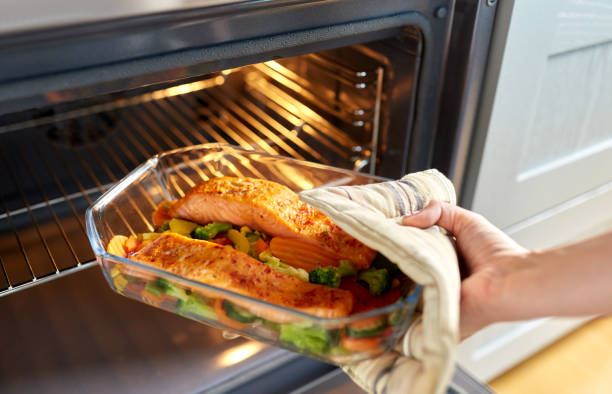
Can You Bake In A Glass Pan
Yes, you can indeed bake in a glass pan, and it’s a common practice in many kitchens worldwide. Glass pans are versatile and offer several advantages for baking.
They distribute heat evenly, ensuring that your food cooks uniformly without hot spots that can sometimes occur with metal pans. Glass pans are non-reactive, meaning they won’t interact with acidic ingredients like tomatoes or citrus fruits, preserving the flavor and color of your dish.
Their transparency allows you to monitor the browning process easily, which is especially useful for delicate baked goods like custards or cheesecakes. However, there are a few considerations to keep in mind when using glass pans for baking.
They tend to heat up more slowly than metal pans, so you might need to adjust your baking time or temperature accordingly. Also, glass can be more susceptible to thermal shock, so it’s essential to avoid sudden temperature changes, such as placing a hot glass pan on a cold surface or vice versa, to prevent cracking.
Overall, with proper care and attention, baking in a glass pan can yield delicious results and offer a convenient option for a variety of dishes.
Benefits Of Using A Glass Pan
Using a glass pan for baking offers several benefits that make it a popular choice among home cooks and professional chefs alike.
1. Incredible Heat Retention
One significant benefit of using a glass pan for baking is its incredible heat retention properties. Glass has a high thermal mass, meaning it can absorb and retain heat efficiently.
When you preheat a glass pan in the oven, it becomes thoroughly heated, creating a consistent temperature environment for your food to bake evenly. This exceptional heat retention is particularly advantageous for dishes that require a steady, even heat distribution, such as casseroles, lasagnas, and bread puddings.
The retained heat helps to keep your food warm for a longer time after it’s been removed from the oven, making glass pans an excellent choice for serving dishes at the table.
This feature not only ensures that your food cooks evenly but also helps to maintain its temperature, enhancing the dining experience for you and your guests. Overall, the incredible heat retention of glass pans contributes to more consistent baking results and enhances the presentation and enjoyment of your culinary creations.
2. Even-Heat Distribution
Another notable benefit of using a glass pan for baking is its ability to provide even heat distribution throughout the cooking process. Glass is an excellent conductor of heat, allowing it to distribute heat uniformly across the entire surface of the pan.
This even distribution helps to prevent hot spots, which can lead to uneven cooking and potential burning in certain areas of your dish. Whether you’re baking cookies, cakes, or roasting vegetables, the consistent heat provided by a glass pan ensures that your food cooks evenly from edge to edge.
This is especially important for delicate baked goods, where precise temperature control is essential for achieving the perfect texture and doneness. The even heat distribution of glass pans promotes thorough caramelization and browning, enhancing the flavor and appearance of your dishes.
Overall, the ability of glass pans to provide uniform heat distribution contributes to more reliable and professional-quality baking results, making them a preferred choice for many home cooks and professional chefs alike.
3. Easy To Clean
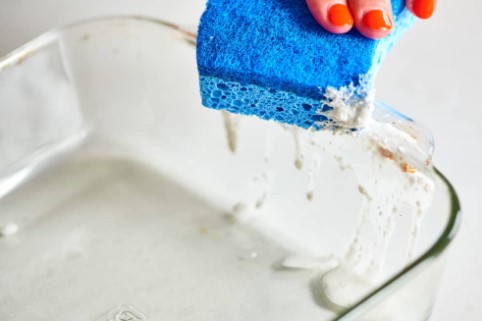
A significant advantage of using glass pans for baking is their ease of cleaning. Glass is inherently non-porous, which means it doesn’t absorb food particles, liquids, or odors as readily as some other materials, such as metal or ceramic.
This non-porous nature makes glass pans resistant to staining, allowing you to easily wipe away any food residue with soap and water or place them in the dishwasher for a thorough cleaning.
Unlike some metal pans that may require scrubbing to remove baked-on residues, glass pans typically release food easily, minimizing the effort required for cleanup. The smooth surface of glass pans prevents food from sticking, further simplifying the cleaning process.
Whether you’ve baked gooey brownies, roasted vegetables, or baked a lasagna, you can count on glass pans to be a breeze to clean, saving you time and effort in the kitchen. This ease of cleaning also makes glass pans a hygienic choice, ensuring that your baked goods are prepared in a clean and sanitary environment.
Overall, the easy-to-clean nature of glass pans enhances their convenience and makes them a favorite among busy home cooks and professional chefs alike.
4. Non-Reactive Material
Another notable benefit of using glass pans for baking is that they are made from a non-reactive material. Unlike some metal or ceramic pans, which can react with acidic ingredients like tomatoes or citrus fruits, glass pans are inert and won’t impart any unwanted flavors or colors to your dishes.
This non-reactive nature ensures that the taste and appearance of your baked goods remain pure and unaltered, allowing the flavors of your ingredients to shine through. Whether you’re baking a savory casserole with tomatoes or a tangy lemon tart, you can trust that your glass pan won’t affect the final outcome of your recipe.
The non-reactive properties of glass make it safe to use with a wide range of ingredients, including acidic ones, without any concerns about leaching harmful chemicals into your food.
This makes glass pans an excellent choice for health-conscious individuals who prioritize the purity and safety of their cooking materials. Overall, the non-reactive nature of glass pans ensures that your baked goods taste exactly as they should, without any interference from the pan itself, making them a reliable and versatile option for all your baking needs.
5. See Through Surface
One of the distinctive advantages of using a glass pan for baking is its see-through surface. Unlike metal or ceramic pans, glass pans allow you to visually monitor the progress of your baking without needing to open the oven door.
This transparency provides several benefits for both novice and experienced bakers alike. Firstly, being able to see through the surface of the pan allows you to check the color and texture of your baked goods as they cook, ensuring they reach the desired level of doneness without risk of overbaking or burning.
This is particularly useful for delicate items such as cakes, where timing is crucial for achieving the perfect moist crumb. The see-through surface of glass pans enables you to observe any bubbling or rising that may occur during baking, helping you anticipate and prevent potential spills or messes in the oven.
Furthermore, the transparency of glass pans enhances the presentation of your dishes, allowing you to showcase the beautiful golden crusts and caramelized edges that develop during baking.
Whether you’re baking a batch of cookies, a savory gratin, or a layered lasagna, the see-through surface of glass pans provides invaluable insight into the cooking process, resulting in consistently excellent results every time.
Overall, the see-through surface of glass pans offers a unique advantage that enhances precision, control, and presentation in the baking process, making them an indispensable tool for any kitchen.

6. Non-Toxic
Another significant benefit of using glass pans for baking is that they are non-toxic. Glass is a safe and inert material, free from harmful chemicals such as lead or cadmium that may be present in some metal or ceramic cookware.
This non-toxic nature makes glass pans an excellent choice for food preparation, as it eliminates the risk of these harmful substances leaching into your food, especially at high temperatures.
With glass pans, you can have peace of mind knowing that your baked goods are cooked in a safe and healthy manner, without any potential health hazards associated with toxic materials. This makes glass pans particularly suitable for families with children or individuals with specific dietary restrictions or sensitivities.
The non-toxic nature of glass pans extends to their production process, as they are typically manufactured without the use of harmful chemicals or coatings that may degrade over time and contaminate your food.
Overall, the non-toxic properties of glass pans make them a reliable and health-conscious choice for baking, ensuring that your culinary creations are as safe and wholesome as possible.
7. Durable
Glass pans are renowned for their durability, making them a long-lasting and reliable option for baking. Unlike some metal pans that can dent, warp, or corrode over time, glass pans maintain their shape and integrity even after repeated use.
The sturdy construction of glass pans ensures that they can withstand high temperatures without cracking or shattering, providing a dependable vessel for all your baking needs.
Whether you’re baking at high temperatures for a prolonged period or transferring your dish from the oven to the refrigerator, you can trust that your glass pan will remain intact and functional.
The durability of glass pans makes them resistant to scratches, stains, and odors, ensuring that they retain their pristine appearance and hygienic properties over time. This longevity not only saves you money in the long run by reducing the need for frequent replacements but also minimizes waste by extending the lifespan of your cookware.
Furthermore, the durable nature of glass pans makes them suitable for a wide range of cooking tasks, from baking casseroles and lasagnas to roasting vegetables and broiling meats.
Whether you’re a casual home cook or a professional chef, you can rely on glass pans to deliver consistent and reliable performance for years to come. Overall, the durability of glass pans makes them an excellent investment for any kitchen, providing lasting value and peace of mind with every use.
What To Bake In A Glass Pan?
Glass pans are versatile tools in the kitchen and can be used to bake a wide variety of dishes. Some popular options include:
Casseroles
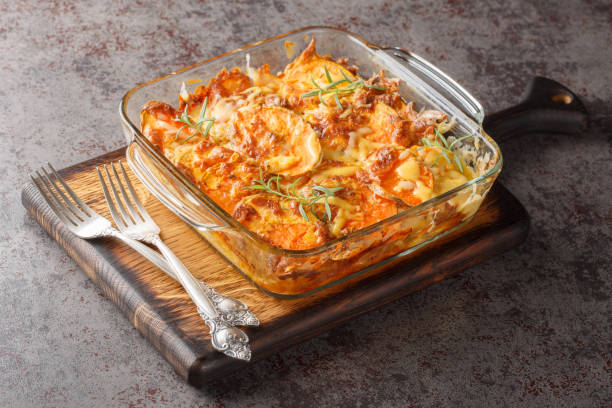
Glass pans are perfect for baking casseroles of all kinds. Whether you’re making a classic chicken and rice casserole, a cheesy broccoli casserole, or a hearty shepherd’s pie, a glass baking dish is an excellent choice.
The even heat distribution ensures that all the ingredients cook evenly, resulting in a delicious and well-balanced dish. Glass pans are also versatile in size, so you can choose one that fits the amount of food you’re preparing, whether it’s a small family dinner or a large gathering.
Plus, the transparency of glass allows you to see the layers of your casserole as it bakes, helping you ensure that it’s cooked to perfection. Overall, glass pans are an essential tool for baking casseroles, providing reliable results and easy cleanup every time.
Brownies
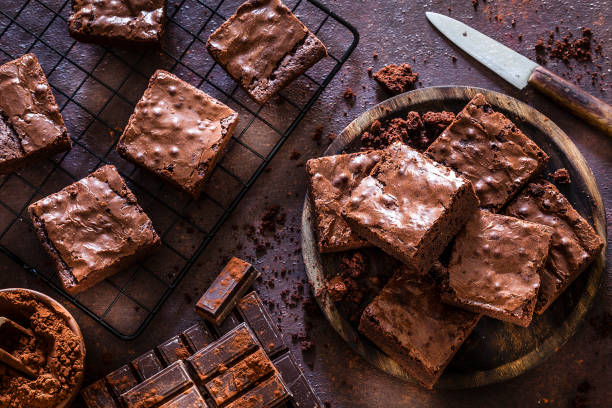
Glass pans are fantastic for baking brownies, offering even heat distribution and a sturdy surface for achieving that perfect chewy or fudgy texture. The non-reactive nature of glass ensures that your brownies won’t have any metallic taste, allowing the rich chocolate flavor to shine through.
The transparency of glass also lets you monitor the browning process, ensuring that your brownies are baked to your desired level of doneness. Whether you prefer thick and gooey brownies or thin and crispy ones, a glass pan will help you achieve the perfect consistency throughout.
Glass pans are easy to clean, making them an excellent choice for baking brownies, which can sometimes leave sticky residue behind. With a glass pan, you can enjoy delicious homemade brownies with ease, knowing that they’ll turn out beautifully every time.
Lasagna
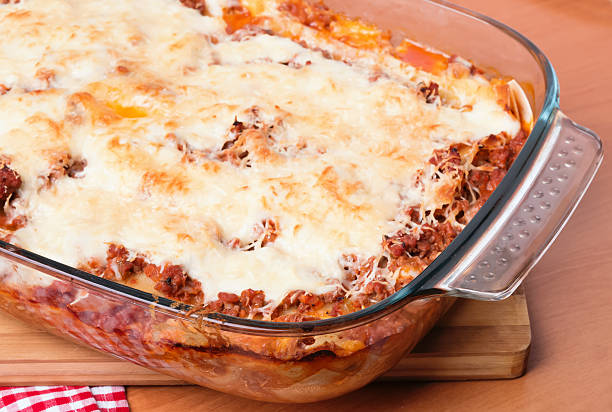
Glass pans are the go-to choice for baking lasagna, as they provide the perfect vessel for layering noodles, sauce, cheese, and other ingredients. The size and depth of a glass baking dish accommodate multiple layers, allowing you to create a hearty and satisfying lasagna.
The even heat distribution of glass ensures that the lasagna cooks evenly from edge to edge, resulting in tender noodles and bubbling, cheesy goodness throughout. The transparency of glass allows you to see the layers as the lasagna bakes, ensuring that everything is evenly distributed and cooked to perfection.
Whether you’re making a classic meat lasagna, a vegetarian version with roasted vegetables, or a decadent four-cheese lasagna, a glass pan is the perfect choice for achieving delicious results every time.
Plus, glass pans are easy to clean, making post-dinner cleanup a breeze. Overall, when it comes to baking lasagna, glass pans are an essential tool for home cooks and chefs alike, offering reliability, versatility, and mouthwatering results.
Bread Pudding
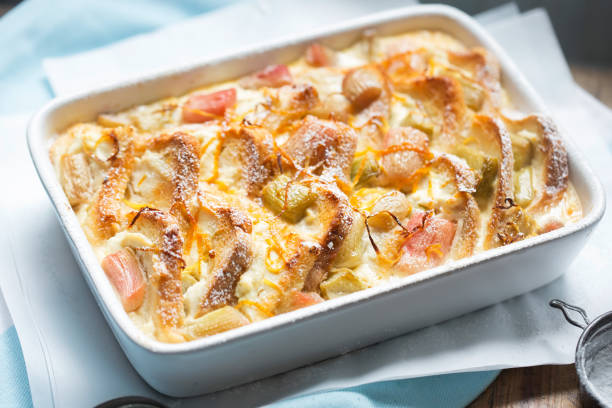
Glass pans are excellent for baking bread pudding, offering several advantages that contribute to a perfectly cooked and delicious dessert. Firstly, the even heat distribution of glass ensures that the bread pudding cooks uniformly, resulting in a moist and custardy texture throughout.
This even baking helps prevent any portions from being undercooked or overcooked, resulting in a consistent and satisfying dessert. The transparency of glass allows you to monitor the browning process, ensuring that the top of the bread pudding develops a beautiful golden crust without burning.
Glass pans are also sturdy and durable, providing a reliable vessel for baking bread pudding, whether you’re making a small batch for a family dinner or a larger one for a special occasion.
Plus, glass pans are easy to clean, making them a convenient choice for baking desserts like bread pudding, which can sometimes leave behind sticky residue. Overall, when it comes to baking bread pudding, glass pans are an excellent option for achieving delicious results with ease.
Roasted Vegetables
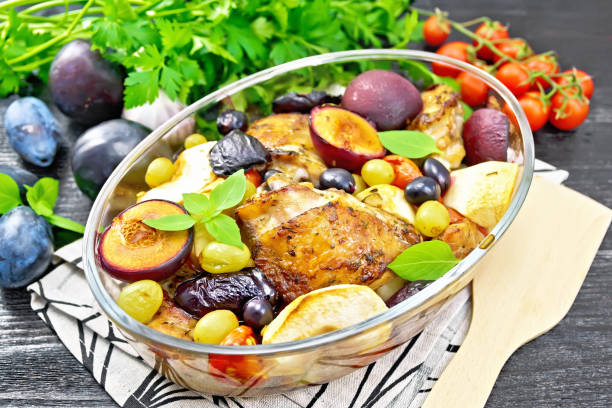
Glass pans are a fantastic choice for roasting vegetables in the oven. The even heat distribution of glass ensures that the vegetables cook uniformly, resulting in perfectly roasted goodness with tender insides and caramelized edges.
The high sides of a glass baking dish help contain the vegetables and any juices, preventing them from spilling over and making a mess in your oven. The transparency of glass allows you to see the vegetables as they roast, so you can monitor their progress and ensure they reach your desired level of doneness.
Whether you’re roasting root vegetables like carrots and potatoes, hearty winter squash, or a colorful medley of bell peppers and zucchini, a glass pan will help you achieve delicious results every time.
Plus, glass pans are easy to clean, making them a convenient choice for roasting vegetables, which can sometimes leave behind sticky residues. Overall, when it comes to roasting vegetables, glass pans are a versatile and reliable option for home cooks and chefs alike.
Baked Pasta Dishes
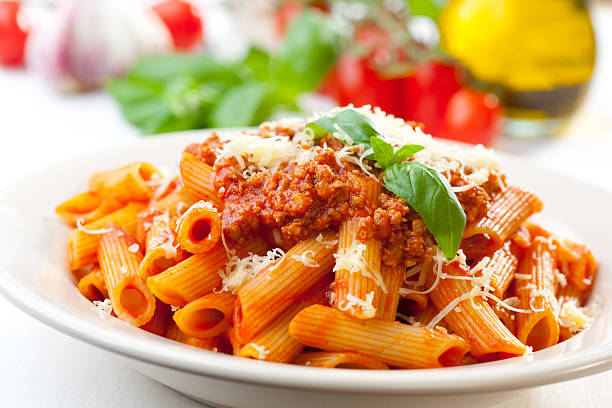
Glass pans are perfect for baking a variety of pasta dishes, from classic baked ziti to creamy macaroni and cheese. The size and depth of a glass baking dish allow you to layer pasta, sauce, cheese, and other ingredients, creating a hearty and satisfying meal.
The even heat distribution of glass ensures that the pasta cooks evenly, resulting in tender noodles and a gooey, cheesy topping. The transparency of glass allows you to see the layers as the pasta dish bakes, ensuring that everything is evenly distributed and cooked to perfection.
Whether you’re making a meaty lasagna, a vegetarian baked penne, or a decadent stuffed shells dish, a glass pan is the perfect choice for achieving delicious results every time. Plus, glass pans are easy to clean, making post-dinner cleanup a breeze.
Overall, when it comes to baking pasta dishes, glass pans are an essential tool for home cooks and chefs alike, offering reliability, versatility, and mouthwatering results.
Quiches
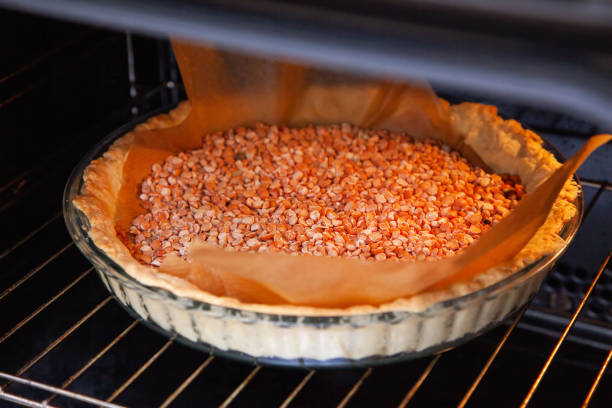
Glass pans are an excellent choice for baking quiches, providing several advantages that contribute to a perfectly cooked and delicious dish. Firstly, the even heat distribution of glass ensures that the quiche cooks uniformly, resulting in a silky-smooth custard filling with a golden-brown crust.
The transparency of glass allows you to monitor the browning process, ensuring that the crust doesn’t over-bake while the filling sets. The depth of a glass pan accommodates the generous filling of eggs, cream, cheese, vegetables, and meats, allowing you to create a hearty and flavorful quiche.
Glass pans are also sturdy and durable, providing a reliable vessel for baking quiches of various sizes, from individual servings to larger family-sized portions.
Plus, glass pans are easy to clean, making them a convenient choice for baking quiches, which can sometimes leave behind baked-on residue. Overall, when it comes to baking quiches, glass pans are an excellent option for achieving delicious results with ease.
Roasted Meat
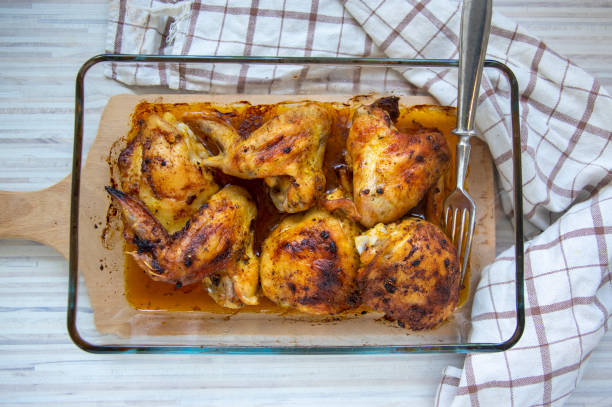
When it comes to roasting meat in the oven, glass pans can be a viable option, although they may not be as commonly used as metal roasting pans. However, there are still some benefits to using a glass pan for roasting meat.
Firstly, glass pans provide even heat distribution, ensuring that the meat cooks uniformly throughout. This can result in juicy and tender meat with a well-browned exterior. The transparency of glass also allows you to monitor the cooking process, so you can gauge when the meat is done to your desired level of doneness.
Glass pans are also non-reactive, so they won’t impart any unwanted flavors to the meat during cooking. However, there are a few considerations to keep in mind when roasting meat in a glass pan.
Glass pans may take longer to heat up compared to metal pans, so you may need to adjust your cooking time accordingly. Glass pans are not as durable as metal pans and may be prone to cracking or breaking if exposed to sudden temperature changes or if dropped.
Overall, while glass pans can be used for roasting meat, they may not be the most common choice for this purpose, but they can still yield delicious results when used properly.
Tips In Baking In A Glass Pan
When baking in a glass pan, there are several tips to keep in mind to ensure optimal results:
Preheat the oven
Preheating the oven is a crucial step in baking that significantly impacts the outcome of your dishes. When you preheat the oven, you ensure that it reaches the desired temperature before placing your food inside.
This allows for consistent and even cooking from the moment your dish enters the oven, resulting in better texture, flavor, and appearance. Preheating is particularly important for recipes that rely on precise temperature control, such as cakes, cookies, and bread, as it helps activate leavening agents and promotes proper rise and structure.
Preheating ensures that your food cooks in the optimal environment, reducing the risk of uneven baking or undercooked centers. By taking the time to preheat your oven, you set the stage for successful baking and guarantee delicious results with every dish you prepare.
Grease the pan
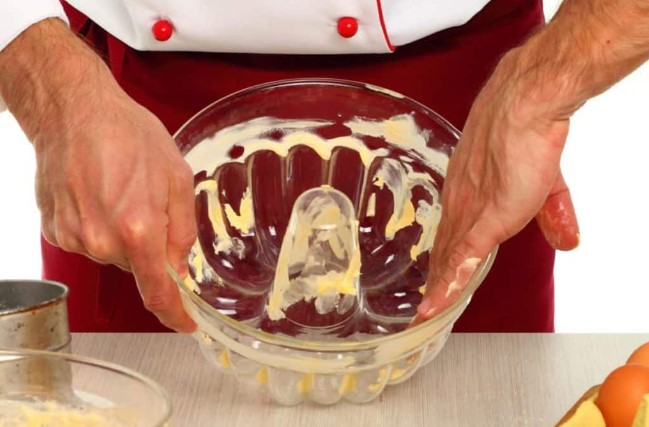
Greasing the pan is a fundamental step in baking that helps prevent your baked goods from sticking to the pan, ensuring easy removal and preserving their shape.
Whether you’re using a glass, metal, or silicone pan, greasing creates a barrier between the pan and your batter or dough, preventing it from adhering to the surface during baking. This step is especially crucial for recipes with high sugar or fat content, which tend to stick more readily.
To grease the pan, you can use butter, oil, shortening, or non-stick cooking spray, applying it evenly to the bottom and sides of the pan using a pastry brush, paper towel, or your fingers.
Greasing the pan not only facilitates effortless release but also helps promote even browning and ensures that your baked goods maintain their desired shape. Overall, greasing the pan is a simple yet essential technique that plays a significant role in achieving successful baking results.
Adjust baking time and temperature
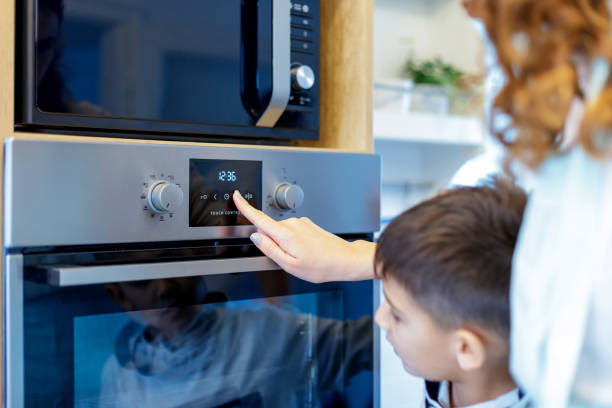
Adjusting baking time and temperature is a crucial aspect of achieving perfectly baked goods, especially when using a glass pan. Glass pans typically conduct heat differently than metal pans, so it’s essential to make slight adjustments to ensure optimal results.
When baking in a glass pan, consider reducing the oven temperature by about 25°F (approximately 15°C) compared to the temperature specified in the recipe. This lower temperature helps prevent the edges from over-browning or burning while allowing the center to cook thoroughly.
You may need to extend the baking time slightly to compensate for the lower temperature, so be sure to monitor your dish closely and use visual cues to determine when it’s done.
Keep in mind that every oven is different, so adjustments may vary depending on your specific oven and the recipe you’re using. By carefully adjusting the baking time and temperature, you can ensure that your baked goods turn out perfectly golden brown, moist, and delicious every time.
Use a baking sheet
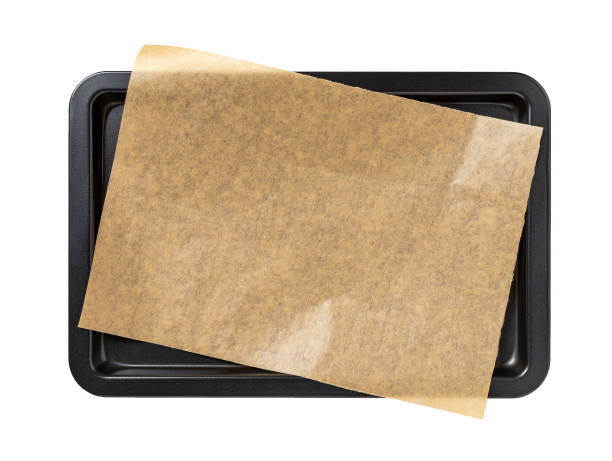
Using a baking sheet underneath your glass pan can provide additional insulation and help promote more even baking, especially when dealing with delicate items or recipes prone to burning on the bottom.
Placing a baking sheet underneath the glass pan helps distribute heat more evenly, reducing the risk of hot spots and ensuring that your baked goods cook uniformly. The baking sheet can act as a barrier, protecting the bottom of your dish from direct heat and preventing it from overcooking or burning.
This is particularly useful when baking items like pies, quiches, or custards, where achieving a perfectly golden crust without burning the bottom is essential. When using a baking sheet, make sure to choose one that is slightly larger than your glass pan to catch any drips or spills and to allow for proper air circulation around the pan.
Overall, using a baking sheet underneath your glass pan can help ensure consistent and successful baking results, making it a valuable tool in your kitchen arsenal.
Avoid sudden temperature changes
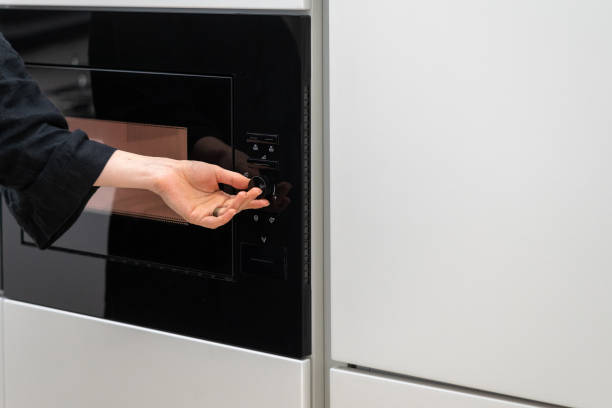
Avoiding sudden temperature changes is crucial when using glass pans for baking to prevent thermal shock, which can lead to cracking or shattering of the glass. To avoid sudden temperature changes, it’s essential to handle your glass pan with care and follow a few simple guidelines.
Firstly, avoid placing a hot glass pan directly on a cold surface, such as a granite countertop or metal stovetop, as the rapid change in temperature can cause the glass to crack. Instead, place a heat-resistant trivet or towel underneath the hot pan to protect the surface below.
Similarly, avoid transferring a cold glass pan directly from the refrigerator to a hot oven, as this can also cause thermal shock. Instead, allow the pan to come to room temperature gradually before placing it in the oven.
When removing a hot glass pan from the oven, avoid placing it on a cold surface or exposing it to cold drafts, as this can also cause thermal shock. Instead, place the pan on a heat-resistant surface and allow it to cool gradually.
By following these precautions and avoiding sudden temperature changes, you can help protect your glass pan from damage and ensure safe and successful baking results.
Use oven mitts
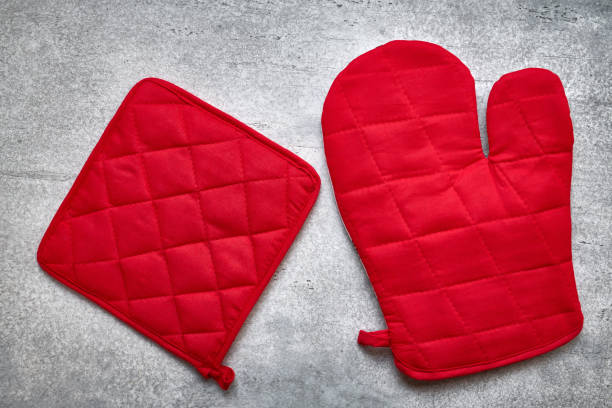
Using oven mitts is essential for safe handling of hot glass pans during baking. Glass pans can retain heat for a long time, and touching them directly with your bare hands can result in burns or injuries.
Therefore, always use oven mitts or potholders to handle hot glass pans when placing them in the oven, removing them from the oven, or transferring them to a cooling rack or serving surface.
Make sure the oven mitts cover your hands completely and provide adequate insulation to protect you from the heat of the pan. When handling hot glass pans, be mindful of their weight and balance to avoid accidents or spills.
By using oven mitts, you can safely enjoy the delicious results of your baking without the risk of burns or injuries.
Monitor your dish
Monitoring your dish is crucial during the baking process to ensure that it cooks to perfection and to prevent any issues such as overcooking or burning. When using a glass pan, it’s especially important to keep a close eye on your dish due to its transparency, which allows you to easily observe the cooking progress.
Throughout the baking time, periodically check on your dish to assess its color, texture, and overall doneness. Look for signs such as browning on the edges, bubbling in the center, or a firm but springy texture (for cakes and bread) to determine if your dish is nearing completion.
If you notice any areas that are browning too quickly or unevenly, you can gently rotate the pan or cover those areas with aluminum foil to prevent further browning. Use a timer to keep track of the baking time and make any necessary adjustments based on visual cues.
By actively monitoring your dish throughout the baking process, you can ensure that it turns out perfectly cooked and delicious every time.
Allow for proper cooling
Allowing for proper cooling is an essential step after baking in a glass pan to ensure that your dish sets properly and maintains its structural integrity. Once you’ve removed the pan from the oven, place it on a heat-resistant surface such as a cooling rack or trivet to allow air to circulate around the pan.
This helps prevent the bottom of the dish from becoming soggy or overcooked due to residual heat. It’s important to let your dish cool for the recommended amount of time specified in the recipe or until it reaches room temperature before attempting to slice or serve it.
Rushing the cooling process can result in a dish that is too soft or falls apart when sliced. Avoid covering the dish with a lid or plastic wrap while it’s still warm, as this can trap moisture and create condensation, which may affect the texture of your baked goods.
By allowing your dish to cool properly before serving, you’ll ensure that it maintains its optimal flavor, texture, and appearance.
Frequently Asked Questions (FAQs) – Baking In A Glass Pan
Can I achieve superior baking results using a glass pan?
Glass pans offer even heat distribution, resulting in perfectly baked goods every time. Plus, they’re non-reactive, preserving the true flavors of your recipe.
Why should I choose a glass pan for baking?
Glass pans are versatile and can handle a wide range of temperatures, making them ideal for various baking needs. Plus, their transparency allows you to monitor your masterpiece as it bakes to perfection!
Will baking in a glass pan enhance the presentation of my dish?
Absolutely! Glass pans showcase your culinary creations beautifully, adding an elegant touch to your table spread. Your guests will be impressed by both the taste and the visual appeal of your baked goods.
How does baking in a glass pan contribute to a healthier lifestyle?
Glass pans are free from harmful chemicals often found in other materials, providing a safer baking experience for you and your loved ones. Additionally, their non-porous surface makes them easy to clean, promoting hassle-free cooking and better hygiene practices.
Can I seamlessly transition from oven to table with a glass pan?
Yes! Glass pans double as stunning serving dishes, allowing you to effortlessly showcase your culinary creations without the need for additional plating. From oven to table, your dish remains the star of the show.
What makes glass pans eco-friendly options for baking?
Glass pans are durable and reusable, reducing the need for disposable baking supplies and minimizing environmental waste. By opting for glass, you’re making a sustainable choice that benefits both your kitchen and the planet.
How do I ensure the longevity of my glass pan for future baking endeavors?
Treat your glass pan with care by avoiding sudden temperature changes and using non-abrasive cleaning methods. With proper maintenance, your glass pan will continue to deliver outstanding baking results for years to come.
Can baking in a glass pan simplify my cooking process?
Absolutely! Glass pans are versatile and can seamlessly transition from baking to storing leftovers in the fridge. With one dish to handle it all, you’ll spend less time on cleanup and more time enjoying your delicious creations.
Will using a glass pan for baking enhance the flavors of my dish?
Yes! Glass pans don’t retain odors or flavors from previous use, ensuring that each bake is fresh and flavorful. Your culinary creations will taste as delightful as they look when prepared in a glass pan.
How can I get the best results when baking in a glass pan?
For optimal results, consider adjusting your recipe slightly to accommodate the even heat distribution of glass pans. Additionally, be sure to grease the pan thoroughly to prevent sticking and ensure easy removal of your baked goods. With these simple tips, you’ll achieve bakery-quality results every time!
Conclusion
In conclusion, the decision of whether to bake in a glass pan ultimately depends on various factors, including the recipe, desired outcome, and personal preference.
While glass pans offer advantages such as even heating and aesthetic presentation, they may require adjustments in baking time and temperature compared to metal pans. Considerations such as safety, durability, and ease of cleaning should be weighed when choosing bakeware.
Whether opting for glass or metal, understanding the properties and characteristics of each type of pan can lead to successful baking experiences and delicious results. Ultimately, experimentation and adaptation are key in discovering the ideal baking vessel for each culinary creation.